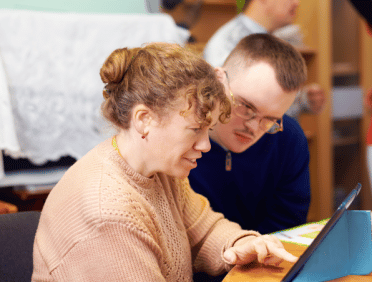Definition of Radicalisation in the UK
If you look up the definition of radicalisation then it will state that it is a process that encourages people to support both terrorism and extremism. This can then lead them to participate in terrorist groups too.
This may mean that they share the same beliefs, that they promote them to others and in some extreme circumstances they may even want to take part in violent acts in what they see as support of the ideas of the group.
Understanding Radicalisation in the UK
For many of us, it is hard to believe that people in the UK can be exposed to radicalisation. But it can and does happen, more often than you may realise. The thing to remember about radicalisation is that it can be seen in a variety of ways and forms.
It could be ideologies, it could be certain religious beliefs, it could be political beliefs and it can also be prejudices that are against a particular group of people or parts of society. This not only relates to those who are in ethnic minority groups but can also cover certain political movements and also those who believe in white supremacy too.
Factors Contributing to Radicalisation
There are no certain aspects of someone’s life, background or personality that could mean that they are most likely to be radicalised, it can happen to anyone, at any stage in their life. However, it has to be said that certain factors can make someone more likely to be targeted for radicalisation or make them more likely to connect with the approaches that these groups use to recruit them.
Social Media and Online Platforms
There are lots of wonderful things about social media and the variety of online platforms that we now have in our lives, however, it can also bring about some negatives too. Social media can be a contributing factor to radicalisation.
It can be used to communicate the extreme views that these groups have and simply present them as “freedom of speech” It can also be a way for these groups to reach as many people as possible with relative ease, and then encourage their “followers” to share their propaganda as widely as possible, which can only increase the people that follow their views.
Socioeconomic Disparities
Another factor in making someone more likely to be radicalised is socioeconomic disparities. This means that some people may be living in a poorer area, where there are more families in poverty, whilst they can see others that are living in much “better conditions” with more wealth and income.
This can lead them to feel resentful towards the other social group or community and blame them for their issues, rather than look at why there may be this socioeconomic disparity in the first place.
Identity and Belonging
A key factor that can impact how likely a person is to be radicalised is how they see themselves and their sense of identity. If they feel that they are not respected or that they are isolated from those around them, then there is always a chance that they may be more likely to connect to those who show an interest in them, even if these people or this group have an extreme viewpoint.
They may sell to them this idea of being a part of something much bigger, a family they may say, which will help that person to feel that they are a part of a community and that for once, they belong.
Ideological Influences
While some people will be radicalised without any links to the group that is promoting these views, there is always a chance that they can be radicalised due to the links that they already have.
They may have friends who are already involved with the group or even family members. They may also be presented with the ideas that these groups have and that they promote and then feel that these align with what they want in their own lives, even if these are not true.
UK Legislation and Regulations on Preventing Radicalisation
To protect and prevent radicalisation the UK Government has put together certain regulations and pieces of legislation that are designed to give proper guidance on how radicalisation can be prevented throughout the UK.
Counter-Terrorism and Security Act 2015
The Counter-Terrorism and Security Act 2015 is a key part of the strategy that was created by the UK Government. It covers a range of measures which are designed to counter the threat of radicalisation as well as reduce the number of people who are likely to be drawn into terrorism.
Part of this act was the duty and focus on schools, colleges and other key organisations and authorities in ensuring that those who are most at risk of radicalisation are as protected as possible.
Terrorism Act 2000 and 2006 Amendments
The 2000 Act is there to make a provision that relates to terrorism and how certain offences within the remit of terrorism can be punished for and prosecuted against. During 2006 the Act had some key amendments made, which contained specific types of actions that were targeted against international government agencies, for example, the UN.
Extremism Disruption Orders (EDOs)
If it is thought that someone is disrupting due to their extreme views then they may be given an EDO. These Extremism Disruption Orders identify that the things that the person is saying and the ideas that they are presenting in a public place are extreme and could be causing distress to those around them.
The Role of Police and Local Authorities
Whilst the Government set the regulations, Acts and laws that relate to extremism and radicalisation; both police and local authorities have a part to play in ensuring that these rules and guidelines are followed.
They have a part to play in recognising those who are most at risk of being radicalised and finding ways to limit the chance of this happening.
Criticisms and Challenges to the Legislation
Some people believe that the idea of Prevent and the other legislations that relate to extremism is stifling the ability to have debates, and differing opinions and also to be able to actively discuss what you think and feel.
However, it is important to remember that you can speak about the way you feel, the things that you believe in and what you think is right in the world without it being detrimental to those around you or cause harm or distress to those who may think or feel differently to you.
Counter-Extremism Strategy: Containing the Threat
The UK created its own 4 themes of counter-extremism and counter-terrorism strategy. The first theme is Prevent- which is there to help to stop people from becoming terrorists or showing support to terrorist and/or extremist groups.
The next aspect is Pursue, which is aimed at stopping terrorist attacks from happening by identifying when and where they may be likely to happen. Third, there is Protect, which is designed to strengthen the protection that people in the UK have from terrorist attacks.
Finally, there is Prepare; which is the method that we take here in the UK to respond to attacks that may occur and reduce the impact that these attacks may have as much as possible.
It is hoped that by following these four methods, the UK and the people that live here will be as protected as possible from terrorism and the risk that it poses to society as a whole.
The Prevent Duty: A Crucial Legal Obligation
The Prevent Duty was created to place a legal duty on a variety of specified places, settings and authorities, to prevent the chance that people will be drawn into extreme groups and pushed towards terrorist acts.
For the most part, it is aimed directly at those who are most at risk of becoming radicalised, which is why it is vitally important that those who have their duty outlined to them, follow the obligations that are set out as a part of the Prevent Duty.
Key Features of the Prevent Duty
The main focus of Prevent Duty is to ensure that those who are most at risk of radicalisation and becoming a part of terrorist groups are stopped from entering this world.
Three objectives relate to Prevent Duty, these are:
Responding to the challenge that terrorism poses and also the threat from those that promote the ideology.
Prevent people from being drawn into terrorism and ensure that these people are provided with advice and support should they become a target.
To work with a variety of sectors and institutions which have the most people within them that could be at risk of being radicalised.
The main focus of Prevent Duty and where it is promoted the most is within schools and educational settings. This is because this is where there is the most risk of people being targeted for radicalisation.
Preventing Radicalisation in Schools and Educational Settings
As we have just mentioned it is vitally important that schools and education settings understand their own duty in Prevent and the part that they play in ensuring that vulnerable people are protected against being brought into extremist groups.
There are a number of ways that schools and educational settings can do this, not only that relate to how they work with children and parents/carers alike, but also how they as adults within the school setting understand Prevent and terrorism/radicalisation too.
The Role of Schools in Building Resilience
One of the first things that schools can do is to make sure that they encourage children and young people to have as much resilience as possible. When a child has resilience taught to them they are going to feel much more able to express and understand their own emotions.
They will feel comfortable in the ways that they feel and they will know how to find a way to have those needs and feelings met (or improved if they are negative). They will be able to understand boundaries and how they can ensure that their own boundaries are met and they can feel able to develop their own interests and talents too.
The more that they do this, then the less chance that they will be vulnerable to those who are looking to bring them into a world of terrorism and extreme beliefs.
Training for Educators and Staff
Another key part of Prevent within schools and educational settings is to ensure that educators, staff and key adults within the setting understand what is meant by Prevent and how it relates to the work that they do and the students that they are responsible for.
Prevent training can form a part of their regular refresher training, not only when they first start to work within the school, but also as an ongoing key part of their learning.
It should cover not only what to look out for when it comes to looking out for possible signs of radicalisation and what can be done to support those children and young people who are most likely and vulnerable to being radicalised.
Identifying Early Warning Signs
Seeing as children spend a large part of their time in school, it makes sense that it is their teachers, teaching assistants and other staff members within the school setting that may identify some of the key early warning signs that they may have been a target for radicalisation.
This means that it is important that everyone in the school setting knows what the key early warning signs are that relate to Prevent. An example of these include:
Voicing strong opinions that they have not had before
Isolating themselves
Sudden disrespectful approach to those around them
Increased levels of anger
Secretiveness, especially about social media and online presence
If these signs are identified it can make the difference between the child or young person being radicalised and them not being radicalised.
Implementing Prevent Strategy in the Curriculum
As well as adults in the school being aware of Prevent and what it includes, it is also a good idea to make it a part of the learning and the curriculum within the school setting (age appropriate of course).
This means that children will learn from a young age that they should feel comfortable asking for help or seeking advice when they see something online that they do not like or that they are not comfortable with. Whilst this may not stop them from becoming a possible target of radicalisation, what it may do is help them to protect themselves and not allow those who have targeted them to bring them into their terrorist group.
Engaging with Parents and Communities
You can also take Prevent one step further in a school setting and engage with parents and the wider community too. This will help to have even more people to be able to recognise potential vulnerabilities and ensure that children and young people have the protection of those around them too.
Having this strong network can really make the difference between these children ending up as a part of a terrorist group and not ending up as a part of a terrorist group. Simply because they have the support that they are going to need to enable them to speak out.
Education and Youth Engagement
Whilst it is vital that schools and educational institutions have an awareness and an understanding of Prevent and what it means for them, it is just as important that the children and young people themselves are aware of the chance that they may one day become a target for radicalisation.
Youth engagement and education of children and young people can give them all of the tools that they are going to need to protect themselves, as well as the tools that they can then use to protect those around them that could be at risk too.
Role of Schools and Educational Institutions
Children and young people do much of their learning in schools, sixth forms and colleges. This means that if there is something that they are going to need to learn or be aware of before they become adults, then these educational institutions are a good place to learn them.
This means that schools and educational institutions have a part to play in giving children and young people the knowledge and skills that they need to protect themselves and those around them.
There are a number of ways that this can happen, including having them as a part of the curriculum and ensuring that children and young people are both resilient and can think in a critical way.
Incorporating Prevention into the Curriculum
If learning about Prevent and the key aspects of this approach is a part of the usual learning for children in school, then they simply won’t realise that this is what they are being taught. This not only will help them in their lives but will also help them throughout their adulthood too.
Not only this but if it is worked into the curriculum (particularly in KS2 and KS3) then the adults in the school setting will feel that this is just a part of their usual teaching and it will become something that naturally happens.
Building Resilience and Critical Thinking Among Youth
Children and young people seem to lack some resilience of late, and this is having an impact on how they cope with the world around them. Particularly when things are not really going their way.
When a child is taught to have resilience and to be stronger in themselves, then they are automatically reducing their chance of being a target for terrorist groups.
They will have a strong sense of self-identity and will feel comfortable having their own thoughts and opinions on things. Rather than this being a negative thing, what it means is that they are much less likely to be led by the viewpoints of others, which is a key factor in someone being a victim of radicalisation.
Community Engagement and Partnerships
Children need protection from radicalisation from a wide variety of places. Schools, their family and friends and even their wider community. This means that a key aspect of Prevent is ensuring that communities are engaged with its core elements.
Strengthening Community Bonds
A community that is bonded together (as well as with those around them) is a strong one. There is a much lower chance that children that are part of a close-knit community are going to be radicalised than those that feel more isolated and alone.
Community bonds can stop a child from seeking out a place to belong, which is when they are often picked up by these groups and presented with their extreme viewpoints. This community will also be able to recognise the signs of radicalisation and take steps to stop it from happening.
Collaborating with Faith-Based Organizations
As well as communities, another aspect of Prevent is making sure that the relevant authorities, even school settings, collaborate and work with their local faith-based organisations. These faith-based organisations can help by showing those around them that whilst these extreme groups may claim to have links to them, they are not actually a part of the faith.
Those who are looking for a sense of belonging that can come from being a part of a particular faith can find it, but they don’t have to feel that they must be a part of an extremist group in order to do this.
Involvement of Civil Society Groups
A Civil Society Group is a group of people who work within a community, they will be different to businesses and different to Governments. They will act on behalf of the people within the community and ensure that their needs are met.
These groups can be hugely beneficial when involved with the Prevent duty. They not only have good links to the community within which they work but they are respected within them too. They will often be aware of where to find the likely targets for radicalisation and ensure that they have the support and protection to stop them from ending up carrying out terrorist acts in the future.
Promoting Dialogue and Understanding
The simplest way to try and reduce the chance of people being involved with terrorism is to ensure that they have an understanding of what this may mean for them and for their wider community.
If you promote dialogue with these people, then you are giving them the chance to talk to you or someone around them when they need it. Which could be all that they need to stop them from going down the extremist path.
It will also encourage them to have a dialogue with others around them too, further cementing their feelings of belonging and giving them the support that they are going to need and benefit from.
The Impact of Radicalisation on Society
It is important to know and recognise the impact that radicalisation can have on a society, a community and the people that it immediately affects.
There can be many different impacts that it has, however, it is something that, when taken in the right approach, can be stopped in its tracks.
Threats Posed by Radicalised Individuals
Those who are radicalised can have an impact by passing on their extremist views to others around them. Not only will this alienate them if those people do not believe the same as them, but it could mean that those who are also vulnerable around them could also be put at risk of being radicalised.
Not only this but if someone turns from radicalisation into a terrorist, they may take a violent act in order to spread their message. This could cause injuries to those that it happens to and in the very worst circumstances, can even cause death. Sometimes even large-scale.
Impact on Community Cohesion and Social Fabric
One of the key things that extremism and radicalisation can have within the community is it can cause a divide. There can be those who feel the same as these groups, sharing their ideologies and visions, alongside those who do not.
This can lead to arguments and even violence erupting in the community and create a sense of distrust and dislike between people who before would have got along. This may result in things such as hate crimes, whereby someone is targeted simply because they are different and have different views from those around them.
A community may even find that they are targeted as a whole; often simply because they have some links to certain groups due to targets within their community.
Connection Between Radicalisation and Terrorism
Whilst not everyone who is radicalised will then go on to commit a terror act, there is a very clear link between the two. Someone who is encouraged to believe in certain extreme ideas and opinions will find it harder and harder to separate from this.
They may end up believing that the way that they feel is the only right way and that those around them will only learn if they are punished for thinking something different.
This means that it is vitally important to recognise signs of radicalisation and take action as soon as possible.
Radicalisation And Safeguarding Training
- Learn Q’s Preventing Radicalisation course is designed to help frontline sectors to be aware of how to prevent radicalism and extremism. Especially for individuals who have contact with adults who may be vulnerable. It raises awareness of the signs and techniques of radicalisation so that you can provide support and guidance to individuals in need as well as save their lives if you can identify these signs.
- Learn Q’s Safeguarding Children Level 1 is an introductory course that provides a basic understanding of safeguarding vulnerable children. It covers the concept of safeguarding, the importance of safeguarding, the legislation in place to protect vulnerable children, the signs of abuse and how to avoid them, and how to respond when a vulnerable child discloses they are being abused or neglected. This course is suitable for anyone who works with vulnerable children, including managers, supervisors, employees, and volunteers at all levels.
- Learn Q’s Safeguarding Children Level 2 course, on the other hand, is a more advanced course that builds on the knowledge gained in Level 1. It provides a more in-depth understanding of safeguarding, including recognising abuse, the responsibilities of different safeguarding roles, effective communication, and how to handle concerns and incidents related to safeguarding. This course is designed for those with additional safeguarding responsibilities, such as those who work in hospitals, general practices, nursing homes, care homes, or domiciliary care, as well as in religious organisations and community organisations.
These courses are ideal for those who work in hospitals, general practices, nursing homes, care homes, domiciliary care, as well as in religious and community organisations. By completing this course, you will be better equipped to handle safeguarding concerns and to ensure the safety and well-being of vulnerable adults.
At Learn Q, we are committed to providing high-quality training that meets the needs of professionals across a range of industries. Our Safeguarding Children courses are designed to provide you with the knowledge and skills you need to excel in your role and make a real difference in the lives of vulnerable children. Sign up today and take the next step in your career!












